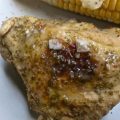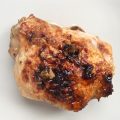So, I’m not normally one to whine, but here goes — I’m tired of always having an irritated voice and throat. There. I’ve said it. (Although there’s less pain when typing than speaking.) Some things in life just have to be dealt with…
From the time I was very young, my sisters and I were involved in music. I guess it was unavoidable, since Dad was a music teacher. We took piano lessons, sang in churches and nursing homes, and played multiple band instruments. And were the peak of fashion. 😄

Music has always been my biggest love – it is my method of communication, hobby, vocation, and therapist.
In my adult years, friends replaced sisters, who live far away. I continued playing/singing alone and in groups all over the state, and in Sweden.
Don’t you love the shoulder pads???

A few years ago, all of that changed. Don’t get me wrong! Music is still my life! But I can no longer sing, due to partially paralyzed vocal chord. I have nearly constant discomfort when talking and singing. On top of it, I have developed a few mild seasonal allergies.
While doing research into ways to soothe and hopefully heal the irritation, I stumbled across the happy marriage of sage and raw local honey. Sage is an herb that I can grow VERY well (this musician is not necessarily blessed with a green thumb), and we get honey from a nearby source. Check your local co-op if you don’t have neighbors that keep bees. 🐝
I’m not an expert, but here are a few details on SAGE & LOCAL RAW HONEY:
Sage –
- lowers inflammation
- boosts immune system
- improves brain function
Local –
- desensitizes to allergens in a particular area
- good for commerce – these are your neighbors, in your community
Raw –
- never heated
- retains natural enzymes and vitamins
Honey –
- natural source of energy and sweetness
- antioxidant powerhouse
- promotes restful sleep
- soothes irritated throat and voice
Sounds like a winning combination!
So, here’s what I do: Remove sage leaves from stems and wash thoroughly. Use a salad spinner, or several kitchen towels, to remove as much water as possible.
Fill a pint-sized canning jar with sage leaves, then pour raw honey over the leaves.

Using a chopstick or knife, move the leaves around so the honey can settle in.

Add more honey, and more sage leaves. Cover the jar and let it stand on the counter for at least one week, stirring daily. The sage leaves will compress and the honey will get thin and almost watery. Honey draws moisture and nutrients from the sage, and since honey is an excellent preservative, this will last a long, long time.

There are probably a gajillion ways to use this amazing honey, but here’s a start:
- Slowly eat a spoonful to calm an irritated throat or soothe a cough.
- Take a couple leaves of sage from the honey and pour boiling water over for a soothing tea.
- Strain sage through a wire mesh sieve, pressing honey out of the leaves. Then take the leaves and freeze with a little water or lemon juice in ice cube trays. Drop a cube into tea or hot water.
- Make sage and lemon chicken thighs.
- Stir a tablespoon or two of the honey into bourbon and serve over ice for a simply wonderful cocktail.

There are no actual measurements for this recipe, but you won’t regret making one or two large batches of throat syrup.
PrintSage and Honey Throat Syrup
Ingredients
- Sage leaves
- Local, raw honey
Instructions
- Strip sage leaves from stems. Wash thoroughly and dry well (using a salad spinner works well).
- Put leaves into a clean jar and pour in honey. Using a chopstick, move leaves around so honey can fill in the cracks. Add more sage and honey until jar is full.
- Cover and allow to stand at room temperature for at least one week, stirring daily.
- Use leaves in tea. Strain honey to use as throat syrup or in cocktails. Excellent with chicken.




